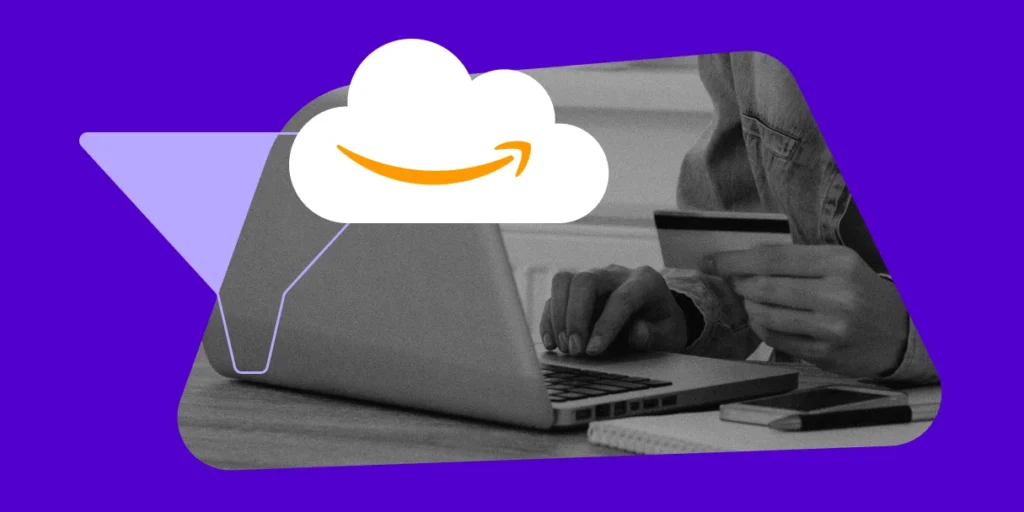2017 was a chaotic year for retail–and as usual, Amazon dominated headlines:
- Amazon built up an army of private label brands.
- Amazon became your biggest competitor on Google Shopping and bought Whole Foods.
- Amazon’s Alexa carved out a new voice-driven path to purchase, and Google and Walmart teamed up to compete.
Of course, not every change in the retail space had to do with Amazon.
We also saw changes in Google and Facebook ads, and many of the general retail predictions from last year came true–from the growth of searchable local inventory to further experimentation with retail tech.
Buckle up, because 2018 promises to be an even bigger year of change.
Read on to find out what the experts believe is in store (no pun intended) for brands and retailers next year.
Jump to a Section
1. 2018 Will Be the Year of Voice-First Shopping
2. More Shoppers Will Browse and Buy Via Mobile
3. Brick and Mortar Stores Will Downsize–or At Least Shift Roles
4. Retailers’ Supply Chains Will Become Transparent
5. Data & Attribution Will Be an Even Bigger Pain Point
6. Cross-Channel Personalization Will be a Reality
7. Facebook Will be the Biggest Social Investment for Retailers
8. Amazon Will Get a Makeover
1. 2018 Will Be the Year of Voice-First Shopping
When we wrote about voice-first shopping back in February, we knew those devices would get big. But we didn’t know that Amazon’s Echo Dot would be Amazon’s biggest seller over Black Friday–or that ads for these devices would be on the horizon.
It’s no surprise that many of our experts agreed Amazon would continue to dominate that space, but Google Homes could rise in popularity in 2018. There’s no surefire way to tell. However, one thing is for sure: Voice-first devices are becoming as common as smartphones in homes across the U.S., and we’re getting close to advertising on the channel.

“Voice will become the operating system for our homes, and Amazon will win the race on voice.”
– Scott Galloway, Professor of Marketing at NYU Stern School of Business

“There are fundamental challenges for consumers to actually purchase through voice, given the lack of visuals.”
“However, we are expecting to see complementary services emerge such as shopping lists in 2018. With backend AI built in, frequently purchased items can be auto-replenished, or virtual lists can be created for shoppers to remember what they want when in-store.”
– Mickey Mericle, Vice President, Marketing and Customer Insights, Adobe

“With the proliferation of Amazon Echo and Google Home devices, voice shopping, particularly for staples and commodities, will continue its march into mainstream shopping behaviors.”
– Ray Hartjen, Marketing Director at RetailNext
2. More Shoppers Will Browse and Buy Via Mobile
In 2016, Google said one in six shoppers start shopping on one device, but complete their purchase on another one.
Advertisers on every digital platform–from Facebook to Google Shopping–have had to wrestle with issues of attribution and device targeting.
As mobile devices become more sophisticated and retailers and brands build better mobile-first websites and apps, we’ll start to see more shoppers complete purchases straight from their mobile device. However, as Devin Fitzpatrick, Founder and President of CDF Consulting points out, it also means everything needs to be faster.

“If it takes more than five clicks for a customer to check out, then revise your checkout flow immediately.”
“One-step checkout will be used throughout more sites: Amazon Pay, Paypal and Apple Pay will be the majority of checkouts due to not having to enter all customer information and credit card information online. It just takes too long!”
And even more than this, mobile will get better integrated with other shopping experience (ex. in-store). Put simply, if your site isn’t mobile-first in 2018, you’ll be mobile-last in sales.

“Mobile shopping is going to continue to move away from just mobile browsing or shopping and more into mobile transactions.”
“Shoppers are more and more comfortable in transacting over their mobile devices, so retailers have to play in that game. If a retailer’s online properties are not mobile responsive, they’ll face insurmountable hurdles in this ultra competitive era of retail.”
– Ray Hartjen, Marketing Director at RetailNext

“Mobile showed up in a big way this holiday season.”
“Mobile drove nearly half (48.8%) of visits and 32.4% of revenue online per data from Adobe Analytics (November first to December fifth).
We expect that brands will begin to leverage smartphones to better blend physical and digital experiences. A home goods or home improvement retailer for example, with large floor space and a geofence, can leverage phones to guide customers to the products they are shopping for—while providing additional services like item details and comparison shopping. These are indirect, but important ways to help drive sales and traffic across all channels.”
– Mickey Mericle, Vice President, Marketing and Customer Insights, Adobe

“The mobile device has moved passed laptops as the new first screen, especially for Millennials and Gen Z.”
“Smart retailers will invest in mobile platforms as a conduit to all other customer touch points. For example, allowing shoppers to use mobile devices to check for real-time inventory, set pick-up and delivery times, or get notifications of deliveries or in-stock items. The key with mobile applications is to make sure the strategies align with the brand ethos. Detailed, relevant information in the hands of the shopper (literally) is a big win for retailers that invest in mobile initiatives.”
– Shelley E. Kohan, Retail Fellows RetailNext and Assistant Professor Fashion Institute of Technology
3. Brick and Mortar Stores Will Downsize–or At Least Shift Roles
We saw a lot of brick and mortar stores shutter their stores this year. And we could say that brick and mortar is history–but the truth is, it’s not. In-store experiences will always have their place, but their place in a shopper’s buying journey will change.
Some brands have adapted by turning their store into more of a showroom (think: Best Buy) and others (Walmart, Target) are working on integrating online and offline so that customers can buy online and pick up in store, etc.
In addition, more digital channels (Google Shopping’s in-store inventory numbers are a good example) are incorporating features that seamlessly integrate an online and offline shopping experience.
Our experts had a lot of ideas around this one.

“Everyone has come to realize that it’s near impossible to out-Amazon Amazon.”
“Acquiring customers online is becoming an incredibly expensive and resource-intensive endeavor. As a result, more and more brands are opening smaller footprint stores in highly trafficked locations in new markets for the purposes of brand education and awareness – customer acquisition – and using their online stores as a method of fulfilling orders and nurturing the long-term customer relationship.”
– Ray Hartjen, Marketing Director at RetailNext

“The designation of stores and ecommerce or digital and physical will morph into the new paradigm shift for retail.”
“Basically, all channels and functions will be considered ‘retail’. The shift includes organizational changes, such as flattening of the organizational hierarchy to structural changes, like closing unprofitable stores. This repositioning of retail allows for a stronger portfolio in terms of profits, branding and physical presence. For example, some physical retailers are closing locations that are under performing and unprofitable which is prudent, while other retailers (and brands) need to build physical locations to strengthen the online presence.”
Shelley E. Kohan, Retail Fellows RetailNext and Assistant Professor Fashion Institute of Technology

“In the past, it was always about how much space you could get to drive market share.”
“However, in the past few years we’ve seen that a number of retailers have too much space. I believe next year the big fashion retailers will continue to downsize their physical store presence. On a positive, we see the trend of more independents opening bricks and mortar stores as landlords need to reduce rents to fill vacant space.
Reduce the number of stores and reduce the cost of running them, and the biggest risk is in the customer experience. I expect that the customer experience will become a catch-word for 2018 in many businesses as internal discussion creates anxiety over space and cost. I expect to see more measurement systems like NPS and more customer led feedback, although I do believe that the majority of retailers will struggle to implement it.”
– Paul Thomas, Senior Consultant, Retail Remedy
4. Retailers’ Supply Chains Will Become Transparent
In a time before Everlane, the process of sourcing a material, creating a product, and sending that product to market was pretty opaque to the general customer’s view.
Now, in the era of authenticity, more customers are asking to see where their shoes came from, who made them, and why they cost so much. Product production will become even more transparent in 2018, particularly for brand manufacturers who seek to attract Millennial and Gen Z’s, more ethically-conscious consumers.
And it doesn’t stop there–supply chains in general will get an overhaul as brand manufacturers and retailers seek to lower in-store costs and streamline inventory.

“Consumers are increasingly demanding transparency across all aspects of product production.”
“We will see more and more brands prioritize and speak directly to their customers about their production practices, and by the same token, we will see consumers abandon those who do not use ethical production methods—including those who claim to, but really don’t (household names not excluded).”
– Ani Collum, Chief Marketing Officer, Ellie Kai

“I expect to see a number of larger players rethink how efficient they are in 2018.”
“Technology can enable some of the simplification, but we have a watch out here; and that is that the technology could be a distraction and in fact a bit of a gimmick. The companies who can embrace tech as an enabler are the ones who will do well, complex tech works best upstream in supply and logistics.”
– Paul Thomas, Senior Consultant, Retail Remedy

“Retailers are now looking to strengthen their inventory assortments without the burden of carrying the full investment in stock.”
“They’re doing this through marketplace partnerships. These examples demonstrate this paradigm shift which has retailers viewing the businesses from a new set of lenses. Portfolio strengthening varies by retailer but may include funding profitable locations with enabling technologies, investing in digital strategies, changing existing store formats, determining the role of globalization for the business model, and vigorous measures in supply chain to reduce cost or increase speed to market.”
– Shelley E. Kohan, Retail Fellows RetailNext and Assistant Professor Fashion Institute of Technology
5. Data & Attribution Will Be an Even Bigger Pain Point
Data is a pretty generic term–but it’s also one of the most important factors in a digital marketer’s decision making. Data analytics could include everything from user data to device to location, and typically uncover a lot of insights into how and when shoppers buy.
The brands and retailers who figure out how to process and interpret data will have a leg up on the competition, because they’ll be equipped to make informed advertising decisions. However, there are still hurdles to overcome.

“While everyone understands the inherent flaws in last click attribution, 2018 won’t lead to a consensus on the best alternative model.”
“Google and Facebook will continue to rapidly improve each of their attribution products but brands will have to continue to customize their attribution model to fit their own customer journey. The complexity and guesswork involved will continue to create pain for brands trying to get a more accurate representation of their marketing investments.”
– Rick Backus, CEO and Co-Founder of CPC Strategy

“Data analytics for most brands will emerge as one of the largest investments for retailers in 2018.”
“By deeply understanding the customer across the multitude of touch points including social, mobile, ecommerce, and stores, brands will get a comprehensive view of each customer segment. Sophisticated analytics go beyond the scope of transactions to include external sources such as demographics, weather, or location data. The combined efforts of comprehensive internal data with external data delivers powerful insights and action including personalized content, predictive analytics and robust recommendation engines.”
– Shelley E. Kohan, Retail Fellows RetailNext and Assistant Professor Fashion Institute of Technology
6. Cross-Channel Personalization Will be a Reality
Personalization is another not-so-descriptive buzzword that marketers really latched onto in 2017.
However, next year’s version of cross-channel personalization promises to be much more robust, and retailers will have the ability to get personal with their offers, on site messaging, email, and social.

“Tailored customer experiences will be the norm in 2018.”
“It’s nothing new that having product (or brand) that creates opportunities for personalization wins from a customer-buy in perspective, from a margin perspective and from an LTV perspective. Retailers will prioritize their ability to use customer data to create more meaningful customer relationships.”
– Ani Collum, Chief Marketing Officer, Ellie Kai

“CRM with hyper targeted messages will become 10-20% of total sales.”
“Brands needs to focus on personalized messaging in all acquisition channels, especially social. I anticipate that 50% of hyper targeting messaging will emerge from email and paid social ads. Also, AI is going to change personalized massaging in social and email acquisition, by creating true 1-to-1 customer experiences for every single customer.”
– Devin Fitzpatrick, Founder and President of CDF Consulting

“2018 will be about linking channels to improve experiences and profits.”
“When a customer walks into a store, assistants will automatically be pinged the information that the customer has shared about their preferences to tailor their personal assistance in store. Likewise, when the customer leaves the store, the assistant will be able to update the customer’s profile to further tailor and improve their automated online experience. Customers will also be able to ping requests to stores ahead of time, perhaps so items that they’re interested in can be waiting for them when they arrive at the store. “
– Cate Trotter, Head of Trends at Insider Trends

“AI left its mark online with chatbots in 2017, and we can expect it to grow even more in 2018.”
“New machine learning technologies will help retailers better manage and operate their businesses, from the beginning of the supply chain through the store and outside the door into post-sale service and marketing. The key for success is to make these benefits tangible for shoppers, something that can be felt through better shopping experiences. After all, what’s good for shoppers is good for the business.”
– Ray Hartjen, Marketing Director at RetailNext
7. Facebook Will be the Biggest Social Investment for Retailers
We’re not going to waste time telling you how important Facebook ads can be for retailers. If you’ve read our blog before, you know we think the platform offers exceptional user targeting and a rare full-funnel marketing opportunity.
(And if you want to dive in more, you can check out our FREE archive of Facebook guides and webinars.)

“In 2018, we’ll see a minimum increase of 15% of total spend in a brand’s marketing budget for Facebook ads.”
“There is no other platform that a brand can use online to find the right audience, capture that audience and expose them to the brand and convert. Facebook is one of the most cost efficient ways to advertise and acquire and retain your customers–all 2 billion monthly users. If you are not advertising on Facebook, then you must in 2018 and allocate at least 10-15% of marketing budget to that channel.”
– Devin Fitzpatrick, Founder and President of CDF Consulting

“Facebook Messenger marketing will finally pick up traction in 2018.”
“Between WhatsApp (1 Billion Daily Active users and Messenger (1.3 Billion Monthly Active Users), Facebook has made it clear that replacing email and SMS with one to one communication is at the top of their priority list. Marketers still haven’t figured out that getting a message into the inbox of a Facebook user guarantees that it will be opened and read. While it’s still unclear if it will be innovation on the part of Facebook or the private market that allows marketers take advantage of messaging as a commercial channel, the opportunity here is just to great to be ignored much longer.”
– Nii Ahene, COO and Co-Founder of CPC Strategy
8. Amazon Will Get a Makeover
As a company, we’re hyper focused on three performance marketing marketplaces/channels: Amazon, Facebook, and Google (Shopping and Search).
Out of those three, Amazon’s 3P Marketplace is the most dynamic, and changes there frequently have dramatic impacts on sellers (remember the whole incentivized reviews thing?).
Here’s a quick glimpse into Amazon’s future.

“Amazon isn’t going anywhere–they’ve already displaced Google as the place where U.S. consumers go first when searching for a product online.”
“That said, in spite of their relentless growth over the last several years, they’ve failed to create a tailored shopping experience like digitally native vertical brands such as Warby Parker, Chubbies and Original Grain. Walmart’s acquisition of Bonobos, DSW’s acquisition of eBuys, Unilever’s acquisition of Dollar Shave Club and investment in Beauty Bakerie–these all point to a growing consensus that the way to stave off Amazon is to fortify a direct relationship with consumers through brands that use social media to drive purchase consideration higher up on the funnel.”
– Nii Ahene, COO and Co-Founder of CPC Strategy

“Amazon banned incentivized reviews in Q4 of 2016 which dramatically shifted the competitive balance for sellers on Amazon.”
“It was a necessary move for Amazon to maintain trust in their review system, but it created a huge barrier to entry for new product launches. We saw much more stability from top products in 2017 than in previous years as sellers lost the ability to quickly build reviews for new products. In 2018 Amazon will change the way reviews are displayed to give newer products a greater chance to compete with legacy products. Instead of displaying only the all time review rating and count, they will move to a system that more heavily weights recent reviews.”
– Rick Backus, CEO and Co-Founder of CPC Strategy
You Might Be Interested In














